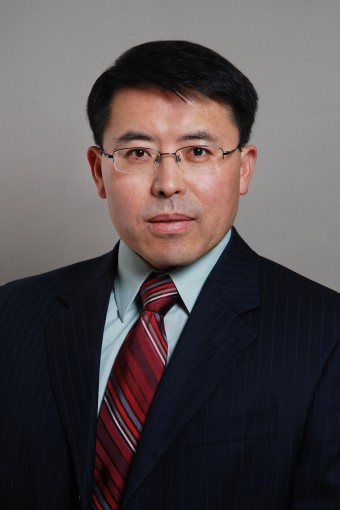
Moving people and goods around the United States is a dirty business. Transportation accounts for 27 percent of U.S. greenhouse gas emissions (second only to electricity production), and most of that is from carbon dioxide released by cars and trucks.
In response, the U.S. Department of Energy launched the EV Everywhere challenge in 2012 to spur the country’s electric vehicle industry, cut pollution and reduce reliance on oil. The challenge is to make electric cars as affordable for families in 2022 as gas cars were in 2012.
The University of Missouri is answering that challenge.
Last fall, the energy department awarded MU Engineering Professor Yangchuan “Chad” Xing a three-year, $2.2 million grant to design an improved method for producing materials for lithium-ion batteries — the kind of rechargeable batteries that power electric cars, laptops and smart phones. Mizzou was the only academic institution to receive a grant in materials manufacturing for an electric vehicle project.
The battery barrier
Although electric vehicles are promising, they have limitations. For example, manufacturing lithium-ion batteries is water-intensive.
Lithium ion batteries work by passing electrons between two components — the cathode and anode — that have opposite electric charges. The cathode is positively charged and is typically made of metal oxide. The anode is negatively charged and is typically made of graphite.
Traditionally, manufacturing metal oxide calls for dissolving salt precursors in purified water to create a slurry, which is then converted to metal oxide, filtered and baked at high temperature until dry.
In contrast, Xing’s process uses biomass to dissolve the precursors, which are then burned in a high-temperature flame, producing a dry, useable powder. Eliminating purified water reduces cost and makes the process easier to scale, which drives costs down further, Xing says. What’s more, it’s greener.
“The important point here is not just that it’s cheaper, but water is a big thing these days. [The traditional process] is going to waste millions of tons of water.
Streamlined Work
Xing speaks with precision. You won’t find stacks of clutter on his desk or a wrinkle in his dress shirt or slacks. In college, was completely fascinated by electrochemical energy, including batteries. He saw it as the future — the best way to provide the energy we need while preserving the environment.
He’s been working on battery technology since coming to Mizzou. He knew that, before lithium ion batteries could take off on sufficient scale to meet our transportation needs, they’d have to get better and cheaper.
Meanwhile, he also researched flame-synthesis of materials — burning two different materials to make a third material.
Eventually, the two lines of inquiry converged.
His grant lasts three years, at the end of which he expects to be producing metal oxide powder on a pilot scale at a plant in Joplin, Missouri, owned by EaglePicher Technologies, LLC, a research partner on the grant.
Xing’s five-year goal is to produce a product that is better than the current technology at half the cost.



